Breeding Jellyfish at the Horniman Aquarium- 05.29.12
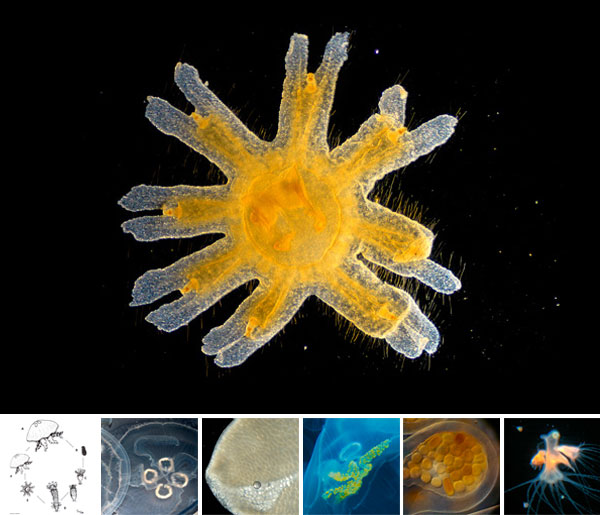 The latest dose of natural inspiration from our resident zoologist and London-based editor, Justine Aw.
The latest dose of natural inspiration from our resident zoologist and London-based editor, Justine Aw.
In addition to showcasing beautiful displays, the staff of the aquarium at the Horniman Museum and Gardens also conduct fascinating research into the species in their collection, including coral reef diseases and embryonic development. The team have shared some gorgeous photos from their research into the breeding of Moon jellyfish (Aurelia aurita) with us and they provide a beautiful insight into this very complicated life cycle! More photos of the beautiful and otherworldly looking phases of developing jellies on the next page.
Jellyfish as we typically see them, are quite seasonal creatures, typically appearing in UK waters around March and disappearing by about October. They have incredibly complex life cycles, involving many stages that look nothing like the medusas we associate with them! The aquarium team at the Horniman have been doing pioneering work into the breeding and development of Moon jellies and we’re lucky to be able to share some of their amazing images (many thanks to Jamie Craggs and James Robson of the the Horniman Museum and Gardens). The original paper can be found in “Observations of the life cycle of the scyphozoan jellyfish Aurelia aurita at the Horniman Museum Aquarium”*.

The rather complex life cycle of the jellyfish! The sexually mature medusa (the jellies we’re used to seeing) (a) releases free swimming pill-shaped planula larvae (b), which then settle on the benthic floor as hydra-like benthic scyphistoma (c), which continue to develop, forming strobula (d), a state in which they remain until an environmental trigger causes them to turn into free swimming wagon-wheel-esque ephyrae (e), which ultimatley become our familiar medusas (f)! The medusas we see live about seven months in captivity, and the developmental phases from fertilization to strobula typically takes about three weeks. However, they remain as strobula until the environment triggers them to become free swimming.
Starting from the very beginning, although male and female jellyfish look quite similar, it is possible to tell them apart on closer inspection. Look carefully at the four ‘rings’ on these two specimens. The inside of these rings is for digestion and the outer edge is the reproductive organs.
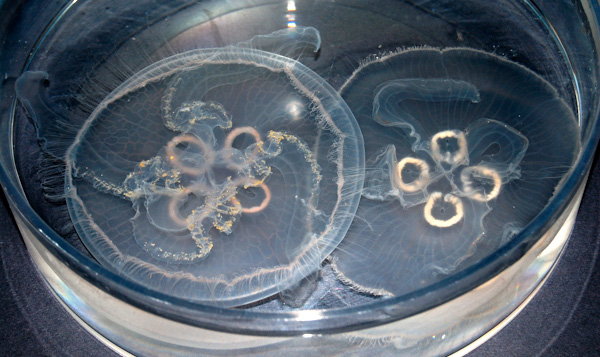
Female (left) and male (right), Moon jellyfish (Aurelia aurita). The females have less dense gonad tissue and you can see through the folds of the ovaries, whereas the tissue on the outside of those rings of the male, on the right, are more opaque.
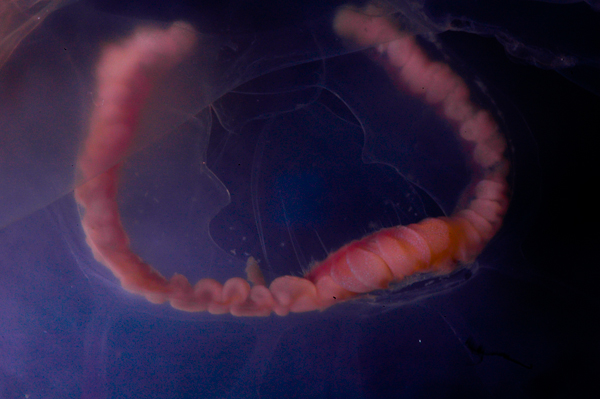
A closer look at the denser gonadal tissue of the male.
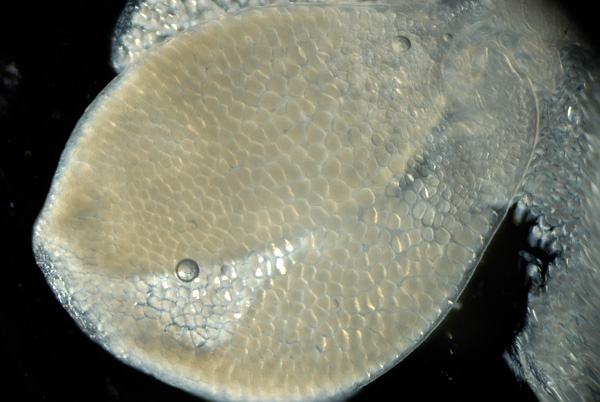
Close up of developed spermatophore with spermatocytes.
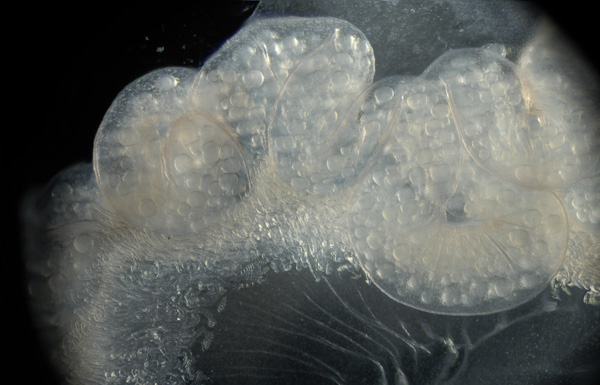
Close up of ovaries with oocytes.
Fertilization beings with males producing spermatozoa in mucous strings, which are collected by the female using her oral arms. Fertilization leads to the formation of planula larvae by gastrulation in and on their way to the brood pouches of the oral arms.
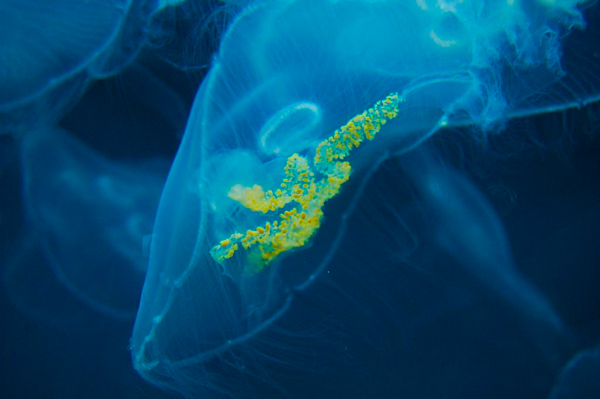
Mature females have brood pouches along the oral arms in which the developing planula larvae develop. The larvae take on a more intense color as they develop.
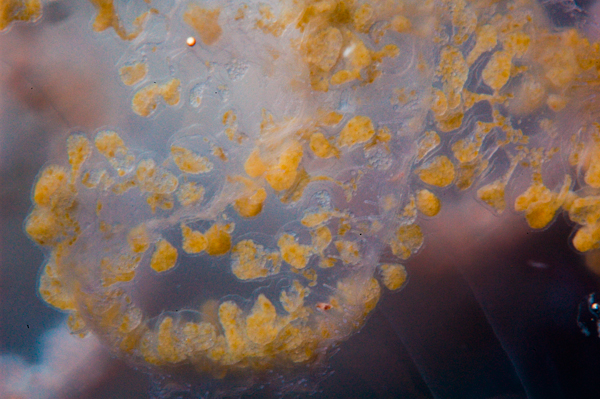
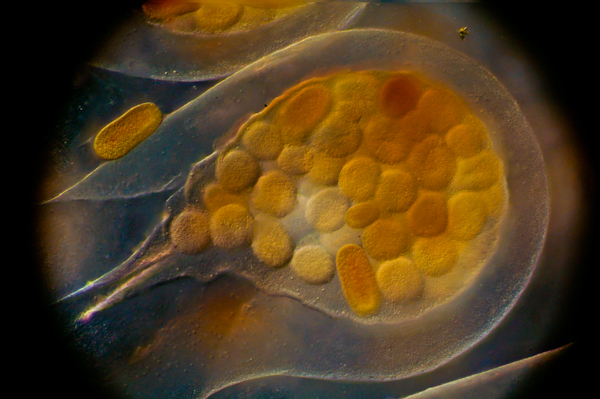
Here is a close up of one of those brood pouches, where you can see the pill-shaped planula larvae almost ready to be released.
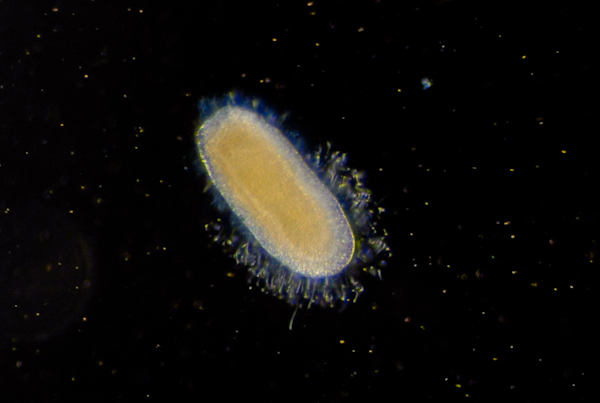
Developed free-swimming planulae exit the pouches and enter the water column, searching for substratum on which to attach. This is a planula with nematocysts discharged.
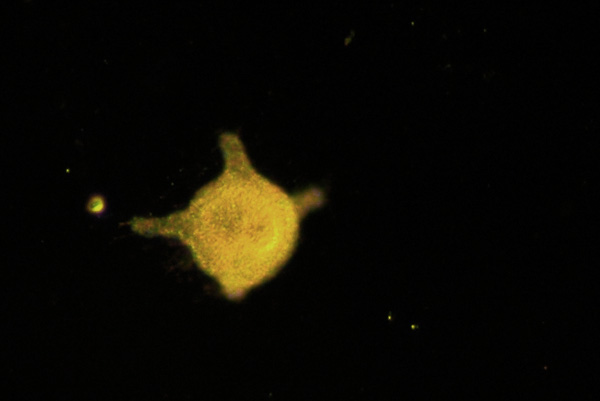
A scyphistoma just 1 day after settlement.
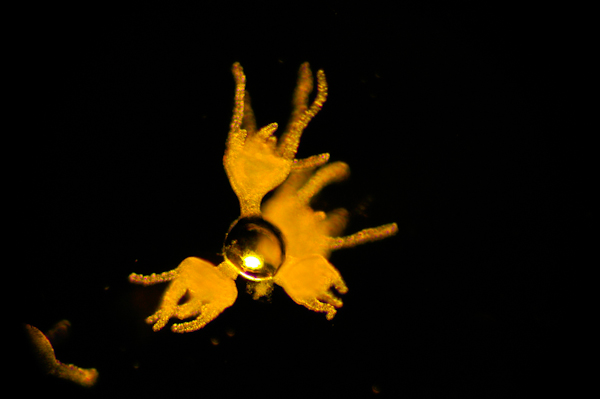
Here are 4 little polyps attached to a microbubble! This is a scyphistoma 5 days post-settlement.
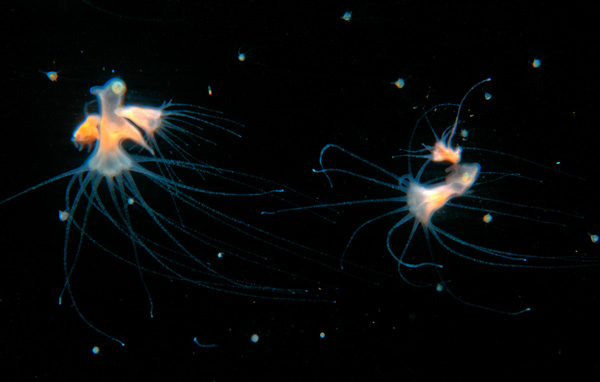
Hydra-like mature scyphistoma undergoing asexual repdroduction (budding and stolon transfer).
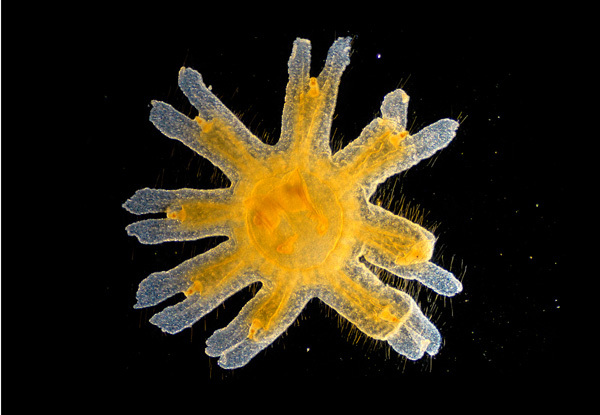
The free swimming ephyrae, one step away from the medusa we all recognize as a jellyfish!
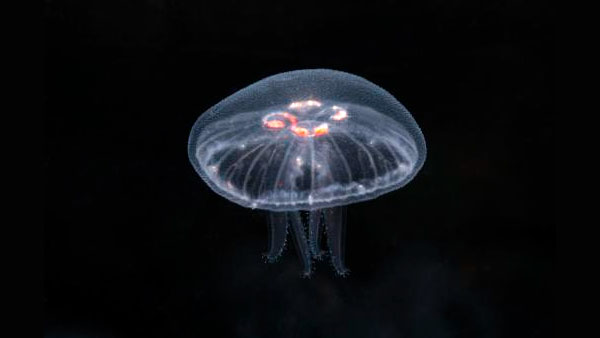
The full citation for this work:
Craggs, J. & Robson, J. (2012). Observations of the life cycle of the scyphozoan jellyfish Aurelia aurita at the Horniman Museum Aquarium. Quekett Journal of Microscopy, 41, 615-621.



